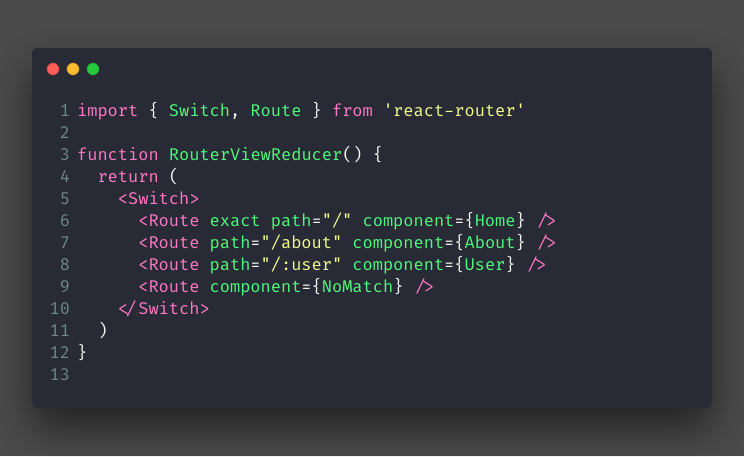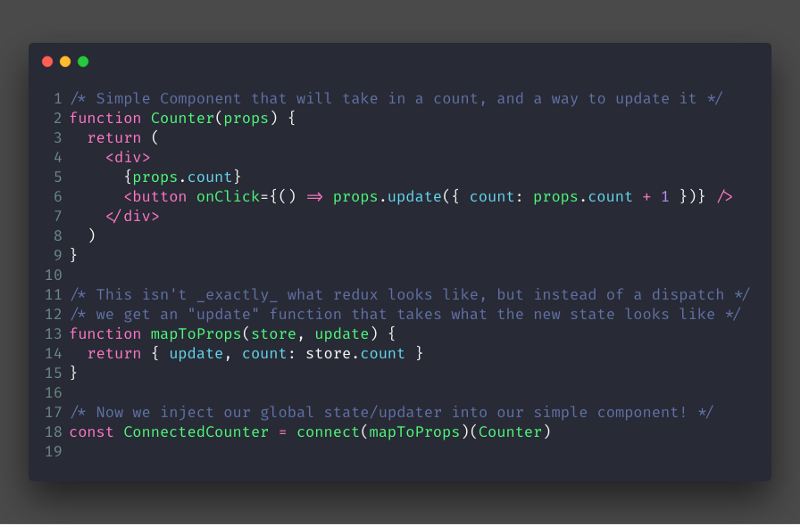

The mapKeys function takes two arguments, the first is the array, and the second is the property that we want to use as the key for each child object. There are ways to do this with vanilla JavaScript, but lodash makes this easy.
#REDUX REDUCER UPDATE#
An action creator can retrieve additional data from the state and put it in an action, so that each reducer has enough information to update its own state slice. Middleware with async logic such as redux-thunk have access to the entire state through getState(). To do this we are going to use a little lodash function called mapKeys(). You can also use a utility such as reduce-reducers to run combineReducers to handle most actions, but also run a more specialized reducer for specific actions that cross state slices.

In short we are going to be doing two things here:
#REDUX REDUCER HOW TO#
However, because this is just a work sample, and because replacing the list is the simpler operation of the two options, we are going to go through the process of merging the list, so that we know how to do that for future reference. In the case of this application, in the real world we would want to replace the entire list of streams, so that if another user shut down their stream, we would not still be able to see it, as it would have been removed from the canonical source list. Data Transformations reducers, Reducers-The Sort Reducer color reducer. However if we were treating the server like the canonical source of truth for the list of servers we would to replace our current store. Functional Web Development with React and Redux Alex Banks, Eve Porcello. For example, if we were doing something like creating an infinite scroll list, we would want to merge the results from the server with our current list and append them to the end. The second thing that we need to consider is whether or not we want to completely overwrite the whole list of streams with the response from the API server, or whether we want to merge the streams from the API with our current list in the store. So we are going to have to convert from an array of objects to an object… of objects. An object that contains lots of other objects. The first thing to understand is that our API server is holding the streams in an array, and our store is holding all of them in an object. There are some things to discuss here before we get into this. The last reducer that we need to take care of is to fetch the list of streams. Import = state return newState default : return stateĪnd the one part here that might be confusing is that we did not use payload.id because in our action we ONLY sent the ID in the payload, so we do not have to specify a property of the payload. So understanding the object manipulation methods above and that we are going to be using the stream ID as the key:value pair, we can go ahead and scaffold out the streams reducer and create our first case for editing a stream like so. Scaffolding the Streams Reducer Reducing Single Records We never send back the original array/object to the store, it must always be replaced with a new one. Remember that the goal is to create a new copy of the original data, and manipulate it in some way. Just as a refresher, here is our list of strategies to manipulate arrays and objects in reducers. Naturally we will use the stream ID as the key:value pair for these objects. Now we are going to use reducers to return objects, and use key value pairs to target specific streams inside of those objects. We have previously discussed array based reducers here: Ncoughlin: Intro to Redux #reducers We have created actions for our CRUD operations, and now must create reducers for those actions. We are in the process of creating CRUD operations for video streams using an external API server and Redux.
#REDUX REDUCER SERIES#
Import GetWishlistDataReducer from ‘.This post continues our series creating a Twitch Clone called “Glitch”.

Reducer function will accept the previous. It is the only place where you can write logic and calculations. Import OrderStatusReducer from ‘./orderStatusReducer’ Reducers are the only way to change states in Redux. create src/app/reducers/index.ts update src/app/. You can import all the reducers in index reducer file and combine them together as an object with their respective names. NgRx Store provides reactive state management for Angular apps inspired by Redux. The combineReducers generate a function which returns an object whose values are different reducer functions. Now, we can combine both reducers by using Redux combineReducers utility. Let us see below how to write its reducer.Ĭonst reducer = (state = initialState, action) => Let us continue the example of showing the list of product items on a web page, discussed in the action creators module. The following is the syntax of a reducer − The following few things should never be performed inside the reducer − Reducer function will accept the previous state of app and action being dispatched, calculate the next state and returns the new object. Reducers are the only way to change states in Redux.


 0 kommentar(er)
0 kommentar(er)
